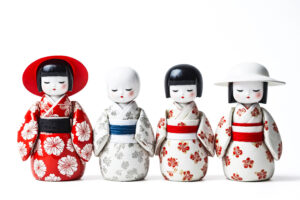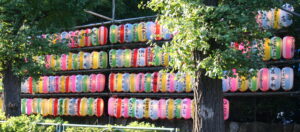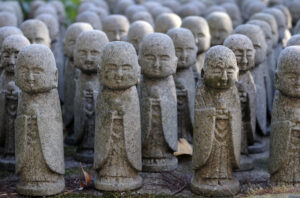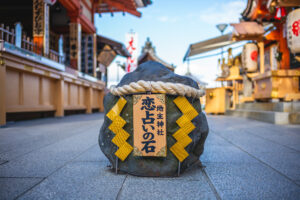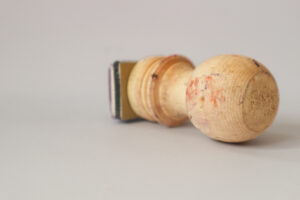In a world where minimalism and functionality often intersect with art and tradition, the Japanese Tansu chest stands out as a remarkable testament to the fusion of utility and beauty. Originating from the land of the rising sun, these timeless storage solutions have transcended their utilitarian origins to become sought-after pieces of furniture worldwide. This article delves into the rich history, artistry, and cultural significance of Tansu chests, exploring how these traditional pieces have evolved and continue to captivate the imaginations of collectors and homeowners alike.
Unveiling the History of Tansu Chests
The journey of Tansu chests began in the Edo period (1603-1868), initially serving the functional needs of storing clothing, documents, and other personal items. The term ‘Tansu’ is derived from two Japanese characters: ‘tan’, meaning storage, and ‘su’, meaning cabinet. Early Tansu were simple in design, crafted from available wood, and often mobile to accommodate the nomadic lifestyle of the era. As the social and economic landscapes of Japan transformed, so did the Tansu, evolving into more elaborate and specialized forms. By the Meiji era (1868-1912), Tansu chests had become an integral part of Japanese households, reflecting the craftsmanship and aesthetic sensibilities of the time.
The Art and Craftsmanship Behind Tansu
Crafting a Tansu chest is a labor of love, requiring skill, patience, and an understanding of traditional woodworking techniques. Artisans select woods such as Keyaki (Zelkova), Kiri (Paulownia), and Sugi (Cedar) for their beauty, durability, and resistance to pests. Each piece is meticulously joined using dovetail or mortise-and-tenon joinery, ensuring longevity without the use of nails or glue. The beauty of Tansu also lies in its finish, which can range from natural oil to lacquer, highlighting the wood’s inherent texture and color. Iron hardware, featuring intricate designs of nature or family crests, not only adds functionality but also serves as a decorative element, imbuing each chest with a unique character.
Tansu Through the Ages: Evolution of Style
Over centuries, the Tansu has evolved in style and form to meet changing societal needs and tastes. From the Kaidan-dansu (staircase chests) used in compact Japanese homes to the lavish Mizuya-dansu (kitchen chests) adorned with intricate metalwork, each variety reflects the era of its creation. Merchants and samurai, the primary patrons in the Edo period, favored elaborate designs that displayed their wealth and status. However, the simpler, more austere styles became popular in later periods, mirroring the minimalist aesthetics favored in Japanese culture. This evolution underscores the adaptability of Tansu design, making it relevant across different periods.
The Functional Beauty of Tansu Chests
The allure of Tansu chests lies not only in their craftsmanship and design but also in their multifunctionality. Ingenious design features such as hidden compartments, modular sections, and versatile use of space make Tansu chests remarkably practical. Whether it’s a compact Kiri wood chest for storing precious garments or a robust Kuruma-dansu (wheeled chest) for heavy items, each Tansu is designed with the user’s lifestyle in mind. This blend of aesthetic appeal and practical utility makes Tansu chests a beloved choice for modern interiors, offering a touch of traditional elegance while meeting contemporary storage needs.
Deciphering the Types of Tansu Chests
Understanding the diverse types of Tansu chests is crucial for appreciators and collectors. Key varieties include the Choba-dansu (merchant’s chest), used for business and often featuring elaborate locks and secret compartments; the Kusuri-dansu (medicine chest), with numerous small drawers for organizing herbal medicines; and the Funa-dansu (ship chests), designed to withstand the rigors of sea travel. Each type serves a specific purpose, reflecting the lifestyle and needs of its users. Recognizing the different forms and their functionalities not only enhances one’s appreciation for Tansu but also aids in selecting the right piece for one’s collection or home.
Tansu in Japanese Culture and Lifestyle
Tansu chests have held a significant place in Japanese homes and culture for centuries, symbolizing the values of order, respect for materials, and an appreciation for craftsmanship. In a culture where space is at a premium, the compact and efficient design of Tansu reflects the Japanese ethos of simplicity and functionality. Beyond their utilitarian use, Tansu are cherished as heirlooms, passed down through generations as a tangible connection to one’s heritage. This enduring relevance of Tansu in Japanese life highlights their cultural significance and the timeless appeal of these exquisite storage chests.
Master Craftsmen: The Heroes Behind Tansu
The creation of Tansu chests is upheld by master craftsmen, whose dedication to preserving traditional techniques ensures the continued legacy of this unique art form. These artisans, often hailing from families with generations of woodworking experience, imbue each piece with a soul and character that machine-produced furniture cannot replicate. The meticulous attention to detail, from the selection of wood to the final touches of hand-forged metal hardware, reflects a deep respect for the craft. The survival of Tansu making, despite the challenges of modernization, is a testament to the passion and perseverance of these skilled craftsmen.
Preserving the Tradition: Tansu Today
In the modern era, Tansu chests continue to resonate, blending seamlessly with contemporary decor while providing a nod to traditional Japanese aesthetics. Artisans and manufacturers are finding innovative ways to adapt Tansu designs for modern living, such as incorporating eco-friendly materials and modernizing hardware for ease of use. Meanwhile, preservation efforts are crucial in maintaining the knowledge and skills required to produce traditional Tansu. Workshops and apprenticeship programs are vital in passing down these techniques, ensuring that the art of Tansu making remains vibrant and relevant for future generations.
Tansu: More Than Storage, A Work of Art
Tansu chests are more than mere furniture; they are works of art that reflect the cultural heritage and craftsmanship of Japan. Each chest tells a story of the hands that crafted it and the era it was made in, offering a glimpse into the daily lives and societal values of its time. For collectors and enthusiasts, owning a Tansu is not just a matter of practicality but an opportunity to preserve and celebrate a rich tradition of artistry and design.
The Global Journey of Tansu Chests
The fascination with Tansu chests has spread far beyond Japan, capturing the imaginations of collectors, interior designers, and furniture enthusiasts worldwide. As symbols of minimalist design and functional beauty, Tansu chests have found a place in homes across the globe. International exhibitions and auctions have played a significant role in elevating the profile of Tansu, introducing these traditional Japanese treasures to a wider audience. This global appreciation underscores the universal appeal of Tansu chests, transcending cultural and geographical boundaries.
Restoring and Collecting Antique Tansu
The market for antique Tansu chests is thriving, driven by enthusiasts eager to own a piece of Japanese history. Restoring these vintage pieces requires a deep understanding of traditional methods and materials, often involving the delicate task of reviving aged wood and rusted metal without compromising the chest’s historical integrity. Collectors prize Tansu for their historical value, craftsmanship, and the stories they hold, viewing them as a tangible link to Japan’s past. As interest in antique furniture continues to grow, the allure of Tansu chests as collectible items is stronger than ever.
Tansu Chests: A Modern Home’s Touch of Tradition
In the contemporary home, Tansu chests offer a unique blend of functionality, beauty, and historical significance. Whether used as a statement piece in a living room, a practical storage solution in a bedroom, or a distinctive addition to an office, Tansu chests bring a touch of Japanese tradition to modern interiors. Their timeless design complements a wide range of decorating styles, from traditional to contemporary, making them versatile additions to any home. As more people seek furniture with character and history, Tansu chests stand out as emblematic examples of enduring design and craftsmanship.
The journey of Tansu chests from pragmatic storage options to coveted works of art encapsulates the enduring appeal of traditional Japanese craftsmanship. As symbols of beauty, utility, and cultural heritage, these chests continue to fascinate and inspire, bridging the gap between past and present. Through the skilled hands of master craftsmen and the appreciation of collectors around the globe, the legacy of Tansu chests is preserved and cherished, ensuring that this unique art form endures for generations to come. In the modern world, where the stories of objects add depth and richness to our lives, Tansu chests remain more than just places to store belongings; they are treasured connections to history, art, and the timeless principles of Japanese design.


